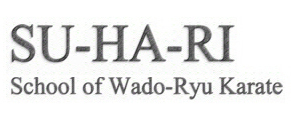How we are working to keep students and users of our facilities safe
To comply with government guidelines and to ensure the safety of our clients we will take the steps outlined below to reduce the risk of transmission of CoViD-19. In light of this all participants, volunteers and workers should read this section to ensure that they should take all reasonable measures to comply with social distancing and hygiene measures at all times, before, after and during physical activity.
All attendees are encoraged to arrive at the facility in uniform and travel home to change/shower.
We will ensure steps are taken to avoid people needing to unduly raise their voices to each other. This includes - but is not limited to - refraining from playing music that may encourage shouting, including if played at a volume that makes normal conversation difficult. This is because of the potential for increased risk of transmission - particularly from aerosol and droplet transmission.
Managing contact
To minimise contact with surfaces, workers/volunteers, other customers and contractors within facilities or while participating in sport and physical activity.
Primary control for minimising transmission through contact is through handwashing and sufficiently frequent washing and avoiding sharing of objects.
Steps that we will take:
- Informing customers and contractors of guidance about visiting the premises prior to and at the point of arrival (including information on websites, on booking forms and in entrance ways).
- Providing handwashing and hand sanitiser and encouraging staff and customers to wash their hands regularly.
- Contactless payments advisable throughout facility.
- Signage to ensure workers, staff and customers are aware of the need to avoid contact throughout a facility.
- Fixing doors open that can be safely left open where feasible.
-
Where possible, reducing the need to open other objects, for example lockers, storage compartments, by making equipment that is permitted for use readily accessible.
- Avoid paperwork being transferred by enabling such processes as bookings, rosters, ladders, etc. through online channels.
Manage capacity and overcrowding
To ensure distancing is possible by limiting the number of customers able to access the facilities.
Maximum capacity is based on the government requirement for social distancing, nature of activities (i.e. if the activity is static vs. requiring a range of movement) and equipment layout and the configuration of facilities.
Particular attention will be given to ventilation and sufficient circulation space specially around equipment and between groups, classes and instructors.
Steps that we will take:
- Conducting a specific risk assessment for our facilities and the proposed activities to identify:
– The number of customers that can reasonably follow social distancing within the gym/leisure facility, taking into account total space, equipment as well as likely constraints (toilets, locker areas, changing rooms and washrooms) and pinch points
– Encourage attendees to arrive at the facility in sports kit and where possible to travel home to change/shower. Use of changing rooms and showering facilities should in general be avoided unless for a person of disability.
– Activities and spaces that can be undertaken and specific measures to ensure social distancing and cleaning. - Limiting the number of customers in the facility overall and in any particular congestion areas, for example doorways between outside and inside spaces.
- Enabling a booking system or other approaches to managing demand, so that no more than the desired number of customers and staff are in the building at any one time.
- Identifying workers/volunteers as designated supervisors for each area of the facility to ensure social distancing measures are being adhered to by customers/students.
-
Managing occupancy levels and changeover by reducing class sizes and amending timetabling.
- Allowing a sufficient break time between classes held in studios in order to appropriately clean the studio and equipment and to prevent waiting in groups.
- Where possible, operating on a book-in-advance basis. Online or over the phone is preferable.
Moving in, out and through facilities
To ensure distancing among workers/volunteers, customers, students and contractors when moving within and through our facilities steps that will usually be implemented are:
-
Using signage such as ground markings or being creative with other objects to mark out required social distance to allow controlled flows of people.
-
Using markings to guide staff and customers/students coming into or leaving the building.
-
Defining process alternatives for entry/exit points where appropriate.
-
Reducing congestion, for example, by having more entry points to the facility. Where possible more than one door will be used for entering the building and exiting.
-
Managing outside queues to ensure they do not cause a risk to individuals, other businesses or additional security risks, for example by introducing queuing systems.
-
Ensuring any changes to entries, exit and queue management take into account reasonable adjustments for those who need them, including disabled customers/students.
-
Looking at how people walk through the facilities and how we could adjust this to reduce congestion and contact between customers, for example, queue management or one-way flow, where possible.
-
Introducing signage that clearly indicates the direction of flow.
-
Organising numbers and equipment to maintain distancing.
Contact while using facilities
To ensure distancing among workers/volunteers and customers/students when using our facilities social distancing should be maintained between all users of facilities including individuals, groups, teams, teachers, trainers and coaches unless users come from the same household or to manage needs on account of a disability when additional mitigation will be essential.
Steps that we will take:
-
Suspending or modifying activities that are not permitted or cannot be undertaken without contravening social distancing guidelines within available facilities.
-
Where possible, adapting and enabling spaces to facilitate appropriate social distancing, including government guided spacing markings on the floor at points of assembly including entrances, foyers and reception spaces.
-
Having clearly designated positions from which colleagues or coaches/volunteers leading activity can provide advice or assistance to customers whilst maintaining social distance.
-
Avoiding use of shared objects e.g. towels, balls, weights, pads, balls, scoring equipment, punch and kick bags unless they can be cleaned or sanitised between users.
-
Ensure that any water fountains have signage which prohibits face-to-tap drinking (no receptacle) and that these facilities are used only to refill personal bottles or containers.
Supporting Test and Trace
The opening up of the economy following the COVID-19 outbreak is being supported by NHS Test and Trace. We will assist this service by keeping a temporary record of your customers and visitors for 21 days, in a way that is manageable for your business, and assist NHS Test and Trace with requests for that data if needed. Collect sufficient data on each attendee (name, home phone number, mobile number, date and times of entry and exit) so that each person could be contacted if there is a case of COVID-19 connected to your facility. This could help contain clusters or outbreaks. These facilities are expected to have systems for recording their customers and visitors. If you do not already do this, you should do so to help fight the virus. We have worked with industry and relevant bodies to design a system in line with data protection legislation, details of which can be found here.
Spectators & children
To ensure distancing of spectators and children within sporting and leisure facilities
Generally attendance by spectators and non-participating children should be avoided and minimised especially within indoor facilities.
Steps that will usually be needed:
-
Allowing spectators would present challenges to maintaining decided capacity levels, spectators will be prohibited until further notice. Chaperones to children may wait outside premises/activity area in a socially distant manner or in their car. Chaperones to children may wait outside premises / activity area in a socially distant manner or in their car unless the child has special needs.
-
Reminding customers who are accompanied by children that they are responsible for supervising them at all times and should follow social distancing guidelines.
-
In cases where a child is participating in activities, permitting only one parent/carer per child to supervise their child while following social distancing.

